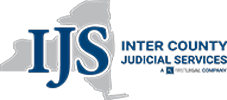Recording Made Easy
eRecording
What is eRecording, and why is it beneficial?
Like other forms of record-keeping, eRecording is critical to establishing an archive of property records as well as other rights and entitlements. It allows the recording office to process documents in a fraction of the time traditional paper requires, bringing turnaround time from weeks to days.
eRecording also brings peace of mind. While natural disasters like fire or flood might destroy physical records, eRecorded documents remain safe. Documents can be stored in the cloud and backed up in multiple secure locations. Lastly, eRecording offers financial benefits by eliminating the cost of printing expensive copies and finding long-term storage space for cumbersome files.
Although legislation is still evolving, numerous states already have laws promoting electronic documents’ use by giving them the same status as their paper counterparts.
How does eRecording work, and who can use it?
The exact process of eRecording will vary depending on the document type submitted. The standard process for physical documents includes both document origination and document recording. In the case of eRecording, there are three possible recording methods, or ‘levels’:
- Level 1 – Acting as an extension of physical documentation, Level 1 eRecording occurs after everything is notarized. The documents are then scanned into the desired format and sent to the recording office for manual indexing.
- Level 2 – The process begins with traditional paper documentation, which is then scanned. Next, a vendor will create a separate file with all the information required for indexing the record. The vendor sends the document to the recording office and may conduct manual quality-assurance testing.
- Level 3 – No physical documentation is required in this fully-electronic recording method. Documents are signed and notarized electronically. The recording office completes the searchable index and generates a viewable image.
Most eRecording concerns documents pertaining to the sale or transfer of personal property and real estate. Notices of settlement, tax liens, tax sales certificates, Lis Pendens, and IRS liens are also eligible for eRecording in accordance with local, state, and federal laws. First Legal’s system meets the security standards issued by the Property Records Industry Association (PRIA), ensuring your documents remain secure.
Click here for the full list of counties in the U.S. where First Legal is approved for eRecording.


